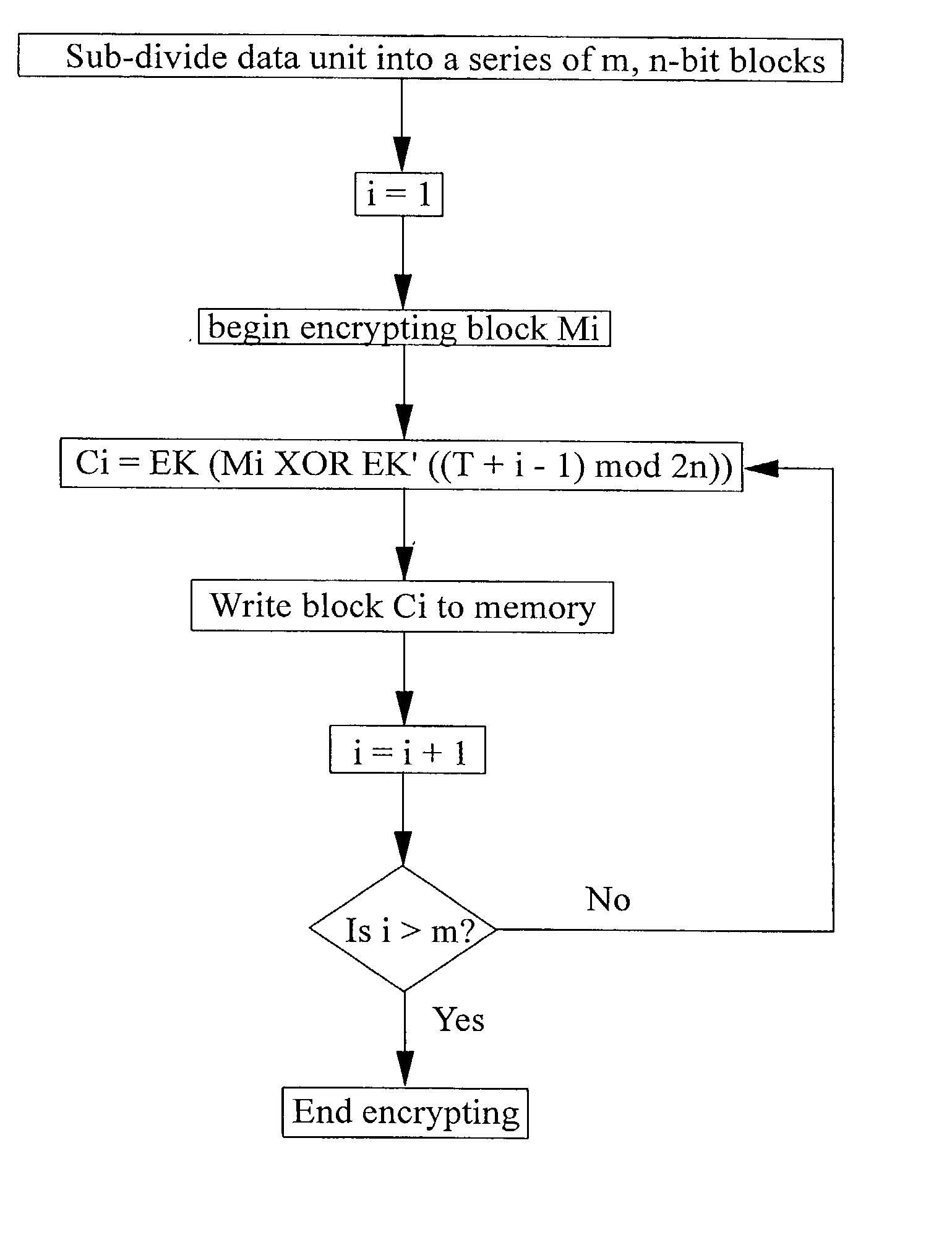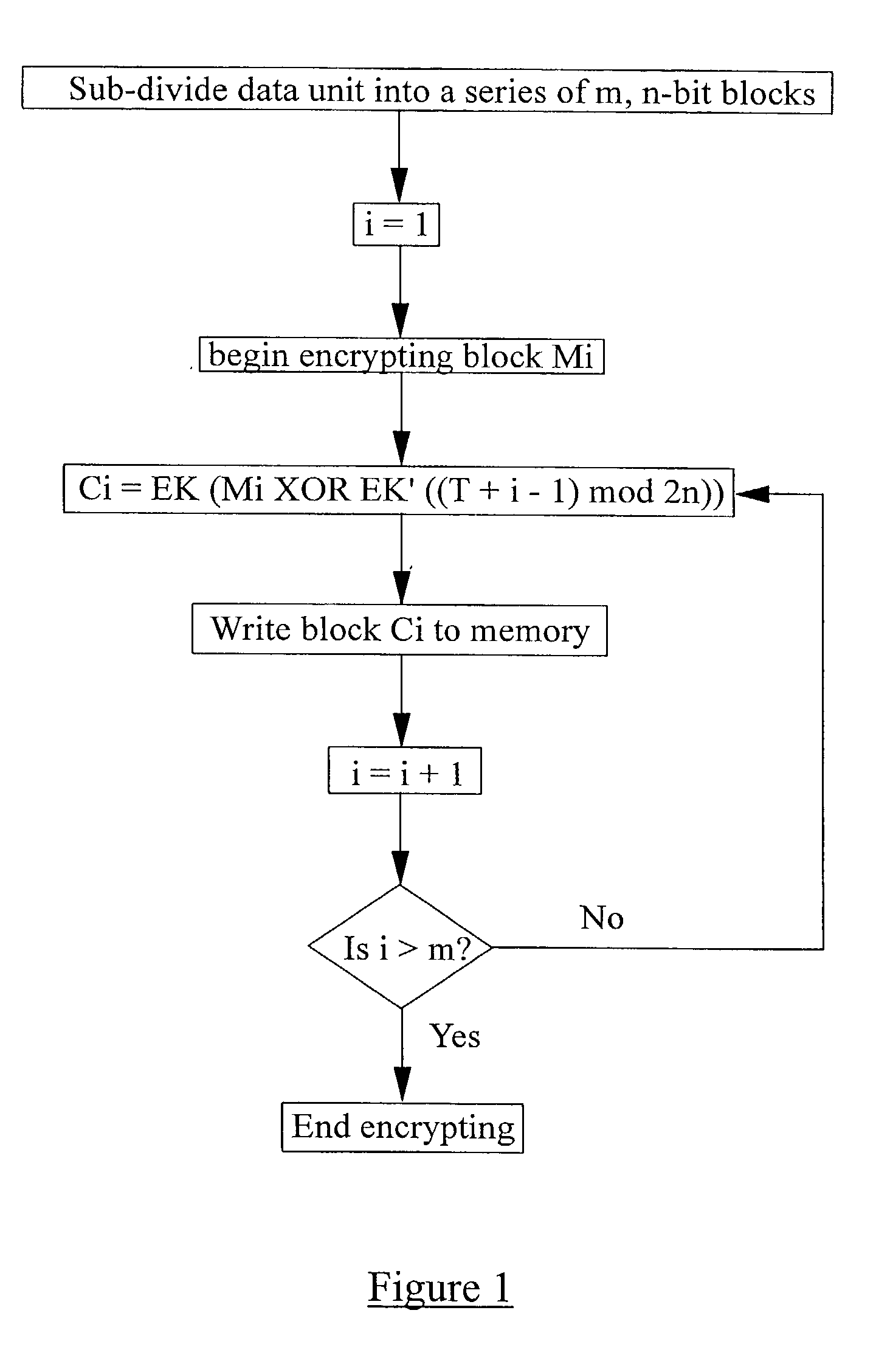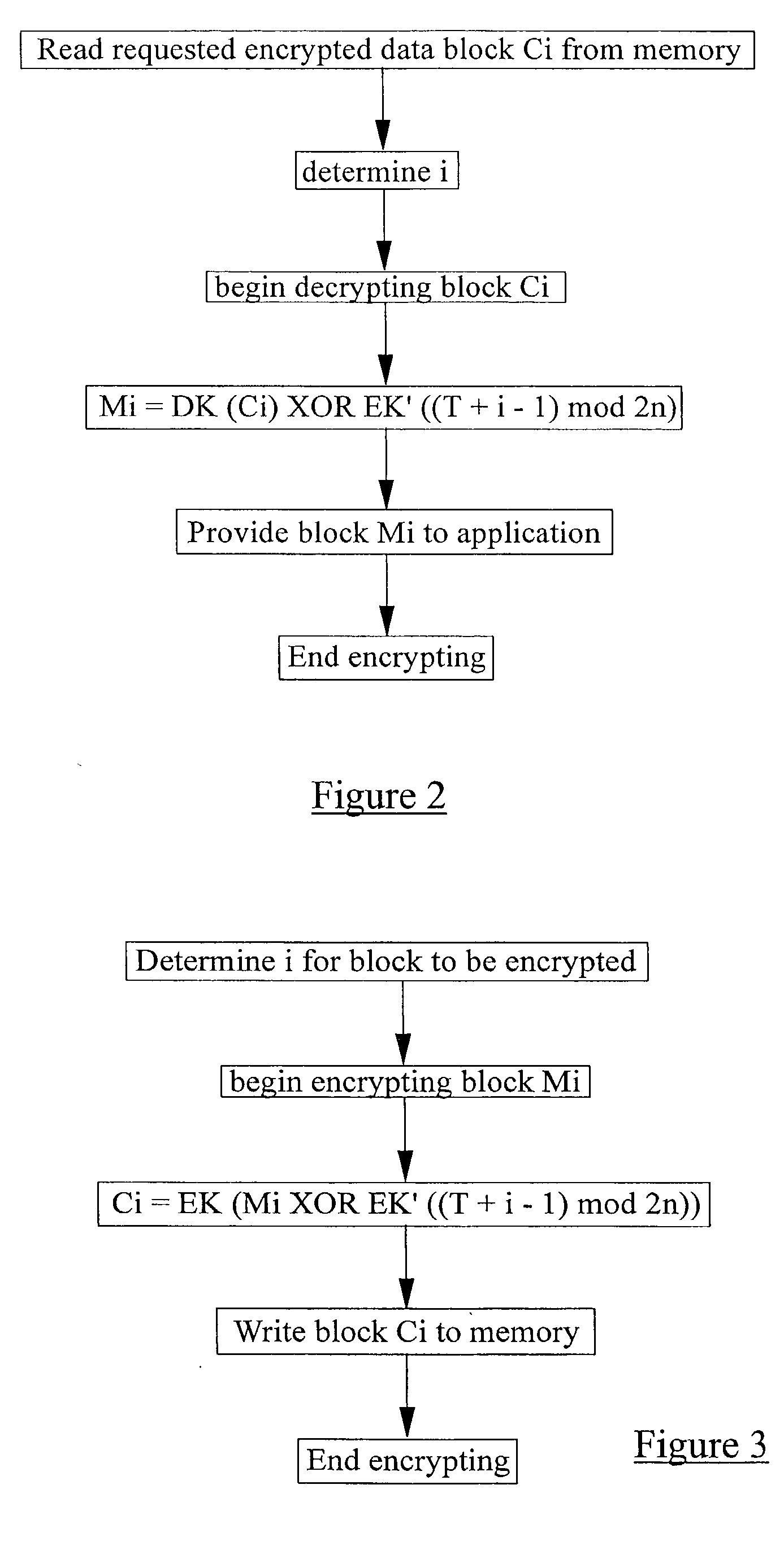Data encryption
a data encryption and data technology, applied in the field of data encryption, can solve the problems of inability to secure block ciphers against computationally unbounded attackers, current phaseout of des, and failures in implementation, and achieve the effect of reducing the time of subsequent operations
- Summary
- Abstract
- Description
- Claims
- Application Information
AI Technical Summary
Benefits of technology
Problems solved by technology
Method used
Image
Examples
Embodiment Construction
[0107] For the purpose of the following discussion, it is assumed that we want to encrypt a series of data blocks M.sub.i (where i is the block index) in real-time and in such a way that each of the encrypted data blocks may be accessed, decrypted in real-time, and modified independently of the other data blocks. By real-time, we mean that the encryption (and decryption operation) is carried out as part of a read or write operation on a computing device in such a way that the user does not perceive any prolonged processing delay over and above that which would result if the data were not to be encrypted or decrypted. Each block has a length of n-bits.
[0108] Encryption is carried out using a cipher function E.sub.K where K is a randomly generated k-bit encryption key. The cipher function may be any suitable function although the AES function is preferred. As well as the key K, a second key K' is required. K' may be derived deterministically from the key K using one of the following m...
PUM
 Login to View More
Login to View More Abstract
Description
Claims
Application Information
 Login to View More
Login to View More - R&D
- Intellectual Property
- Life Sciences
- Materials
- Tech Scout
- Unparalleled Data Quality
- Higher Quality Content
- 60% Fewer Hallucinations
Browse by: Latest US Patents, China's latest patents, Technical Efficacy Thesaurus, Application Domain, Technology Topic, Popular Technical Reports.
© 2025 PatSnap. All rights reserved.Legal|Privacy policy|Modern Slavery Act Transparency Statement|Sitemap|About US| Contact US: help@patsnap.com



